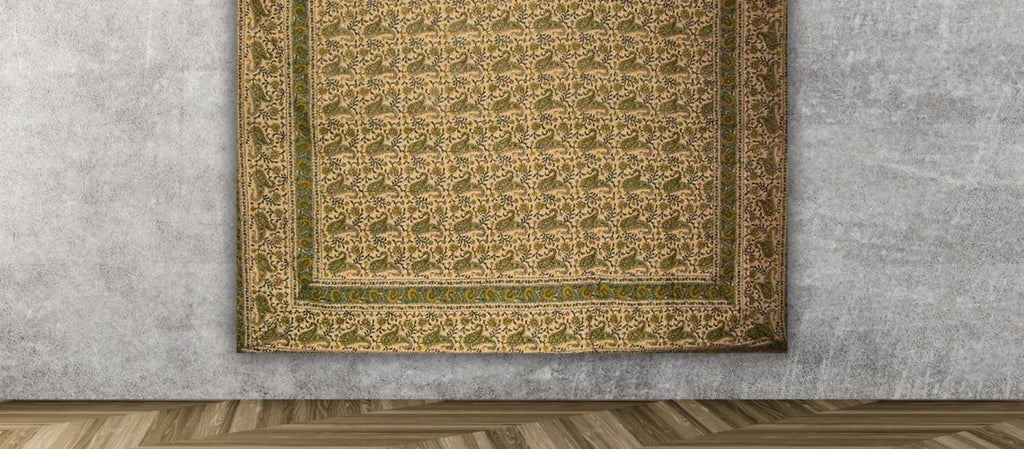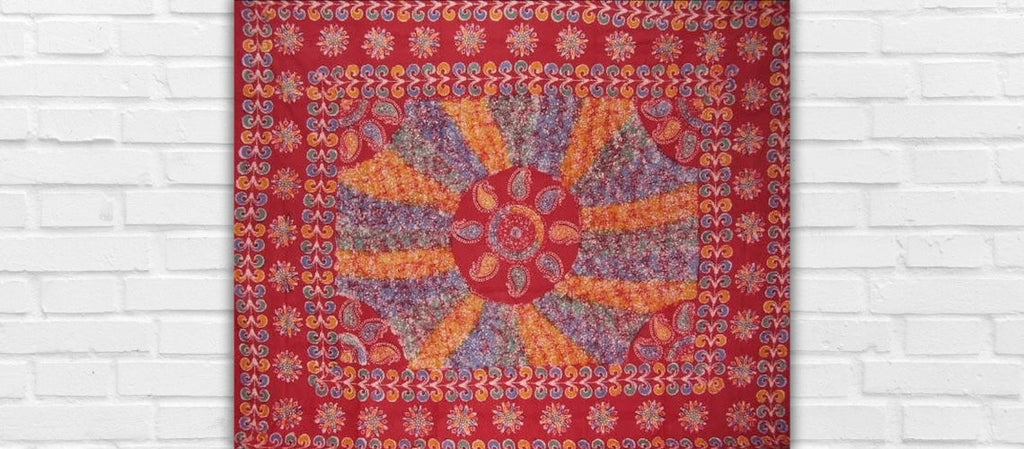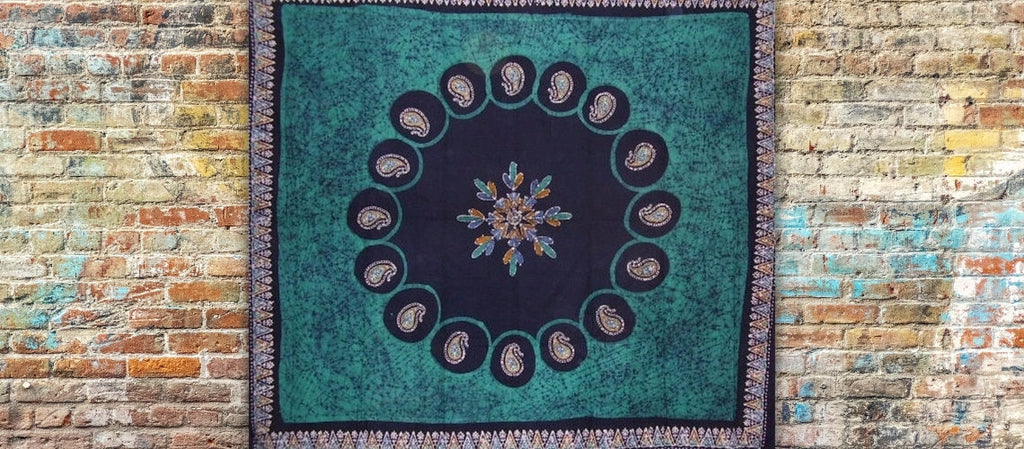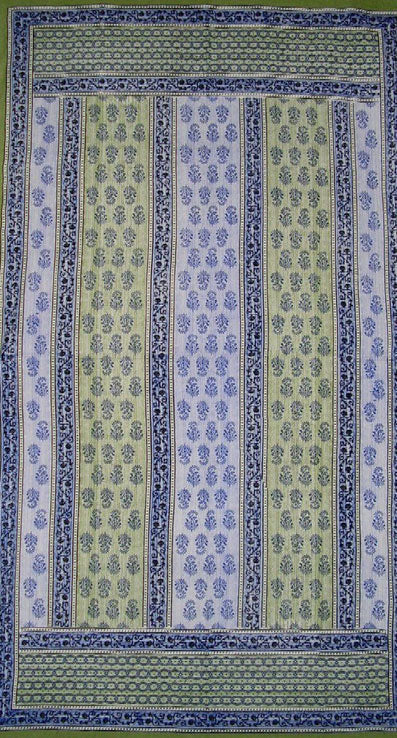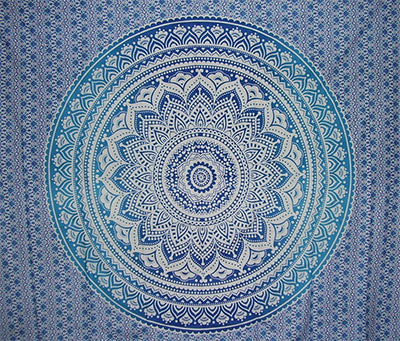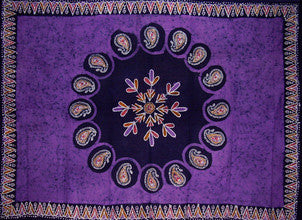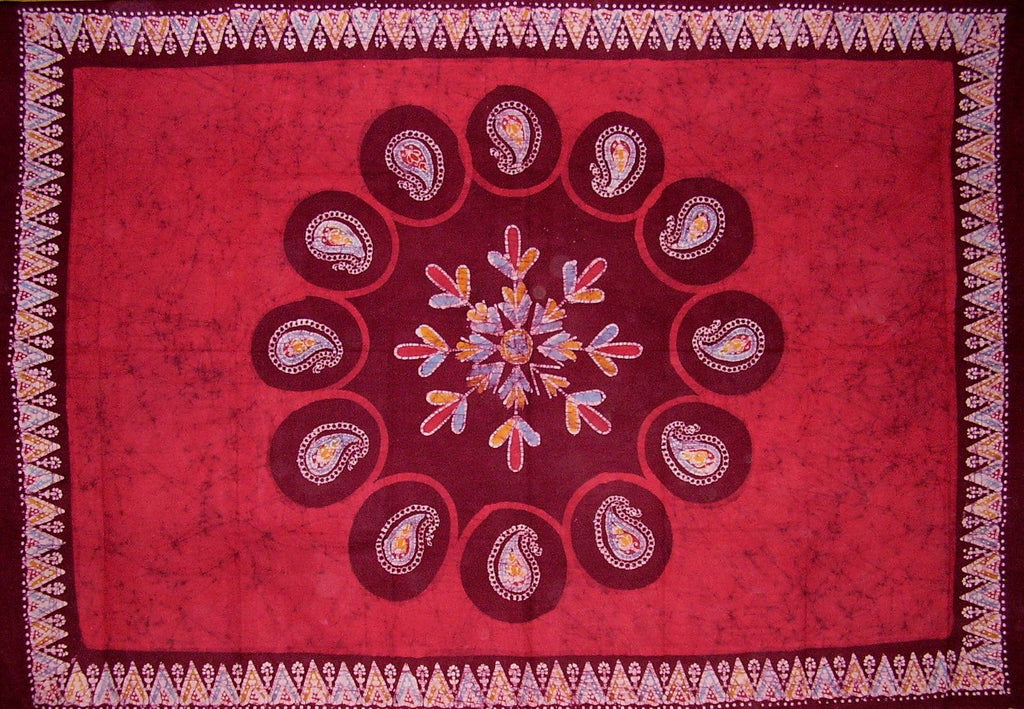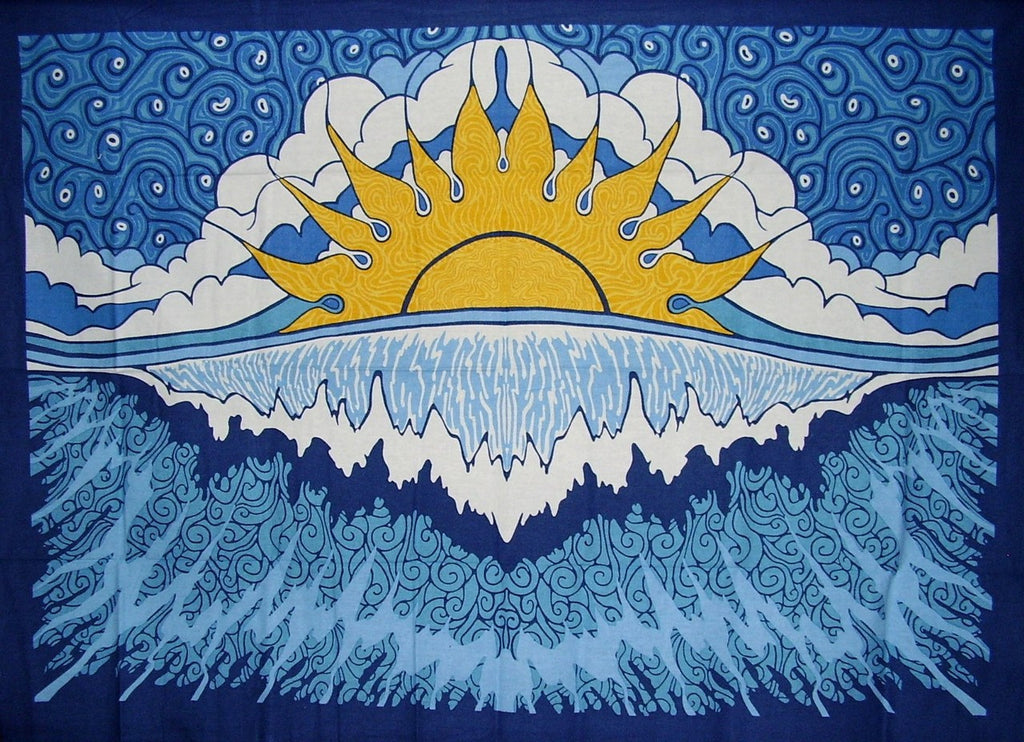When it comes to adding a unique touch to your home decor, few pieces have the same transformative power as an Indian tapestry. These vibrant and intricately crafted textiles have long been cherished for their rich history and cultural significance. Whether you’re drawn to their bold patterns or their ability to instantly liven up a space, an Indian tapestry is a timeless way to infuse your home with heritage and color.
At Full Moon Loom, we celebrate the beauty of traditional Indian tapestries and their modern-day appeal. From Indian tapestry wall hangings to bohemian tapestries, these stunning pieces are the perfect addition to any room. In our latest blog article, we explore how to style your home with these exquisite textiles, while paying homage to their deep-rooted cultural origins.
What Makes an Indian Tapestry So Special?
Before diving into how to incorporate an Indian tapestry into your decor, it's important to understand what makes these textiles so unique. Traditionally, Indian tapestries are made using a combination of techniques that include block printing, batik, and weaving. Each piece tells a story, often reflecting the artistry and customs of various regions of India.
The bohemian tapestry, a modern iteration of the Indian classic, typically features vibrant colors, eclectic patterns, and nature-inspired motifs. The hippie tapestry, popularized during the 1960s, carries a sense of freedom and spiritual connection that still resonates today. Regardless if it's an intricate design or a more minimalist approach, these tapestries bring a sense of warmth, personality, and movement to any room.
Choosing the Right Indian Tapestry for Your Space
When it comes to selecting the perfect Indian tapestry wall hanging for your home, there are a few things to consider. The size of your space, the colors of your walls, and the overall vibe you're aiming for all play a role in determining which tapestry will work best.
1. Consider Your Room’s Aesthetic
No matter if you live in a minimalist apartment or a cozy, eclectic home, an Indian tapestry can enhance your decor. For modern spaces, a bohemian tapestry with muted tones and geometric patterns can add texture and style without overwhelming the room. On the other hand, bold, large Indian tapestry wall hangings with rich reds, blues, and yellows can serve as the focal point of a more neutral space.
2. Think About Functionality
An Indian tapestry is not just decorative; it can also serve a practical purpose. Hang a tapestry behind a bed as a wall hanging for a dreamy, artistic touch, or use one to add color and texture to a living room. You can even drape one over a couch or chair for added warmth and dimension. Additionally, many people use tapestries as bedspreads or tablecloths, creating a vibrant focal point that reflects their personal style.
3. Complement Your Color Scheme
The beauty of Indian tapestries is that they come in a variety of colors, from earth tones to bold, jewel-toned shades. If you’re looking to create a calming atmosphere, opt for a tapestry with soothing greens, blues, and whites. Alternatively, if you want to inject energy into the room, choose a tapestry with fiery reds, oranges, or purples. Whichever palette you choose, make sure it complements your existing furniture and decor.
How to Style Your Home with Indian Tapestries
Now that you've chosen your perfect Indian tapestry, it’s time to style it within your space. Here are some creative ways to incorporate hippie tapestries and bohemian tapestries into your home.
1. Create a Feature Wall
One of the most striking ways to showcase an Indian tapestry is by turning it into a feature wall. Large Indian tapestry wall hangings are perfect for filling up blank, boring walls. Hang them as the centerpiece in your living room, bedroom, or dining area to draw attention and create visual interest. The intricate designs will act as an instant conversation starter, making your space feel more inviting.
2. Layering for Texture and Warmth
Another way to style your Indian tapestry is by layering it with other textiles. Consider draping your bohemian tapestry over a bed as a bedspread, then layer it with throws and pillows in complementary colors. In the living room, place it over a sofa or chair, pairing it with plush cushions and cozy blankets to create a warm, eclectic vibe.
3. Frame It as Art
If you’re looking for a more polished look, consider framing your Indian tapestry. This can transform the textile into a unique piece of art, adding sophistication and elegance to the room. Use a simple, minimal frame to let the vibrant colors and patterns of the tapestry shine, or opt for a more ornate frame to complement the rich cultural heritage of the fabric.
4. Use It as a Room Divider
If you’re working with a larger space or want to create a cozy nook, consider using your Indian tapestry wall hanging as a room divider. Drape it from the ceiling to create a sense of separation between areas, or hang it horizontally across a doorway to add both style and privacy. This is especially effective in open-concept homes where the goal is to delineate spaces without breaking the flow.
Indian Tapestries: A Bridge Between Cultures
Indian tapestries have a unique ability to connect cultures and generations. Their deep historical significance and artistic value make them more than just home decor—they are cultural artifacts that continue to inspire modern designers and homeowners alike. If you’re captivated by the hippie tapestry’s free-spirited vibe or the bohemian tapestry’s eclectic, worldly charm, these textiles offer a perfect way to introduce heritage and color into your living spaces.
By embracing the artistry of these timeless fabrics, you not only beautify your home but also honor the traditions and stories they carry. Each tapestry is a piece of history: an enduring symbol of craftsmanship, culture, and creativity.
Ready to Add Color to Your Home?
If you’re ready to incorporate the beauty of an Indian tapestry into your home, look no further than Full Moon Loom. We offer a stunning collection of Indian tapestry wall hangings, bohemian tapestries, and more, all handpicked for their beauty and craftsmanship. Browse our selection today and bring the vibrant colors of India into your living space!



